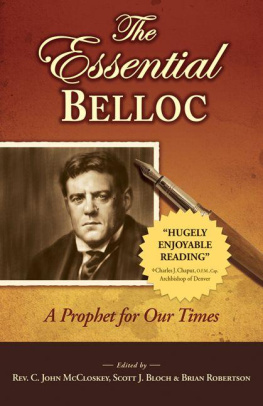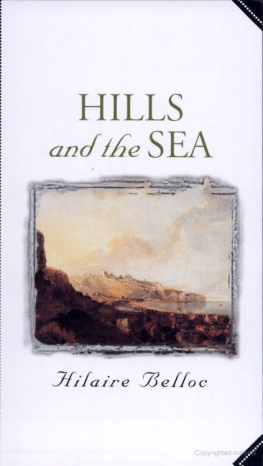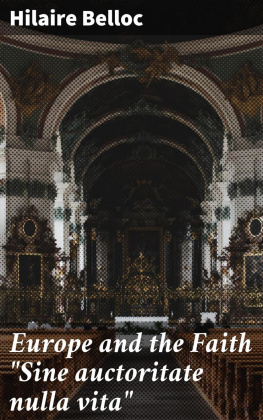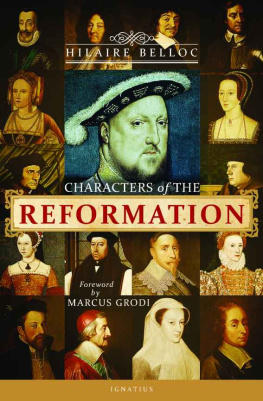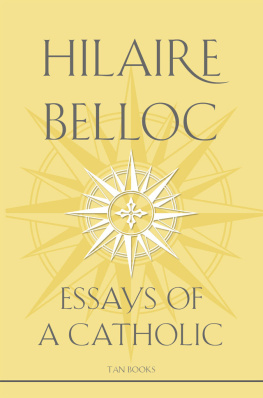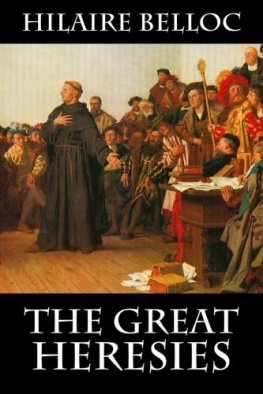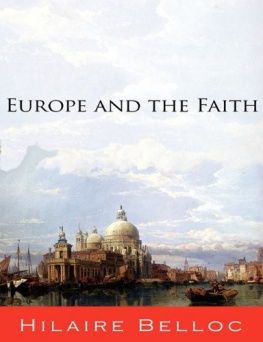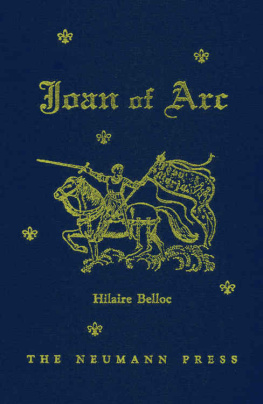There are a score of ways in which a man may treat of the Crusades. They were, in their entirety, a continuous struggle between our civilisation and the hostile world of Islam, which all but overwhelmed Europe. The contrast, in its vividness, has struck all minds in any degree awake to the past. The colour and the drama of medieval warfare fill the story. Or, again one may speak of the Crusades in their deepest aspect as the conflict between Christendom and that undying Anti-Christ which desires to kill Christendom. One may regard the Crusades (and that is the commonest fashion) as subject for romance; it is in this aspect that they have been introduced to the world that reads English and mainly so introduced by the genius of Sir Walter Scott in his excellent novel (and grotesquely unhistorical work) The Talisman. Or, again, one may make the Crusades a text for exemplifying the strength and weakness of the Gallic temperament; or, again, a text for exemplifying the permanence, the exaltation, and the vices of Islam.
In this study the author has concerned himself with another limited but essential side of the story. He has attempted to know why and how, as a military effort, through military errors, the original great experiment failed: why and how from the military excellence of its first leaders it came so near to success and might perhaps have attained it. He deals with the story as essentially one continuous campaign, or even one battle, a battle of ninety years, a battle with a political objective, the Holy Places, a battle which in attaining its objective might have secured a political result that would have changed the world, a battle that began with a victorious offensive and ended in full defeat.
This being his theme, he has confined the affair to the effort to retain what the first Crusaders set out to grasp and with their loss of the Holy Sepulchre he closes the record.
H. BELLOC
THE WORLDS D EBATE
Human affairs are decided through conflict of ideas, which often resolve themselves by conflict under arms. To understand those decisions under arms which determine in succession the fate of the world, three things should occupy the mind: first, the nature of the issue and its launching, that is, the occasion of its coming to battle; second, the military character of the opposing forces; third, the strategy and tactics of the campaigns.
It is proposed in this book to deal with that major conflict under arms between Christendom and Islam which took the form of the First or Great Crusade: its triumph, the exhaustion of the result it had achieved, and the final catastrophe of an episode of victory and defeat covering the very long lifetime of a maneighty-eight years. Gibbon, in a phrase as concise as any of his packed sentences and far more exact than most of them (for he was ignorant of the religious temper he attempted to judge), called this major episode in our history, The Worlds Debate.
An effort was made after centuries of peril and invasion, during which civilisation had lost half its area, to react and impose upon the Mohammedan world the domination of the Christian; its initial success which we call the First Crusade, occupied the last years of the eleventh century (from 1095 to 1099). That initial success was gained by great hosts ill-organised but ardent, and in spite of divergent personal ambitions, consequent delays, continual and at last rapid melting away of forces, the goal was attained. The Holy Sepulchre, to rescue which near a million men, first and last had risen, was carried and held by the last few thousands who had survived and endured till Jerusalem.
The swarm settled; the Western warriors, two thousand miles from home, cut off by such long sea passages and by such months of marching over such burnt, alien land, struck root and might feel that they had permanently grasped the vital belt of the Orient. All seaboard Syria was theirs and nearly all that bridge of fertile land which unites the rivers of the north, the fields of Cilicia, the pastures of the Armenian valleys with the green wealth of Egypt, the Delta and the Nile. That bridge, a narrow band pressed in between the desert and the sea, was the all-important central link joining the Moslem East to the Moslem West; giving Mesopotamia, Persia, and the Mohammedan mountaineers beyond, their access to the wealth of Cairo, of Tunis, of all Barbary and to the wealth also of half-conquered Spain.
Should the link be broken for good by Christian mastery of Syria, all Islam was cut in two and would bleed to death of the wound.
But though the Crusaders had nearly occupied all the narrow band, it was nearly and not quite. There ran down the edges of the desert a string of cities and their connecting roadAleppo, Homs, Damascuswhich remained wholly in Moslem hands and still threatened the seacoast belt and its Christian garrisons.
Their inability, through lack of numbers, to hold all the corridor between the sand and the waves left all the effect of the Crusades incomplete, and to this must be added the effects of blood.
The Christian, Western host which had seized the link, the Bridge, in the First or Great Crusade was mainly French. Its fighting corps of armed knights and their followers was mainly Gallic; Norman, Provenal, Angevin, Lorrainers and Picards, with Flemings and some few Rhine-landers as well. National divisions had hardly yet arisen among Christian men, who were all of one strict religion and therefore of one habit of mind. But the blood told, and the Franci (whom the court of Constantinople called the Gauls) had the weakness as well as the strength of their race as it has been known throughout history. They had its intense energy, its aptitude for arms, its sudden enthusiasms and in such moods, exalted unity of aim; they had further its aptitude for interpenetrating the society of the conquered. But they had also its violent personal conflicts, its vice of faction and recurrent civil war: the private ambitions and greed of individual leaders: the sudden distractions and the following of some new thing.
All this would weaken them: but more still the lack of reinforcement in so very distant and isolated an advance-guard. Merchants and pilgrims came in numbers, the Italian galleys enlarging Eastern trade. Armed adventurers singly and by bands reached the Francs of Over-seathe men of Outre-mer. But not enough. The harvest garnered by the Great Crusade remained insufficient and precarious; its results were already shaken when within fifty years there came a loss of critical territory, the northern bulwark of the realm the Crusaders had foundedEdessa. The spasmodic attempt to recover from the check was what we call the Second Crusadea brief and insufficient effort at reinforcement which filled the middle of the twelfth century, 1147-48.
There followed another somewhat briefer period of less than half a century, in which all runs down to ruin, the attempt to hold what had been won grew more and more difficult, and the immediate military objective of the Crusaders was lost through the fall of Jerusalem in 1187 after the overwhelming, in 1187, of the last Christian rally at Hattin.



